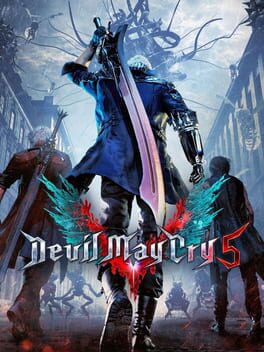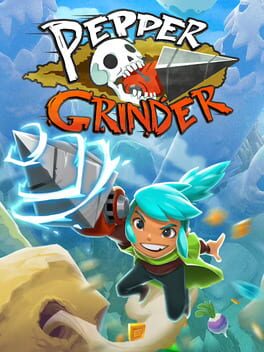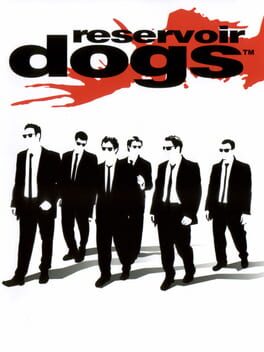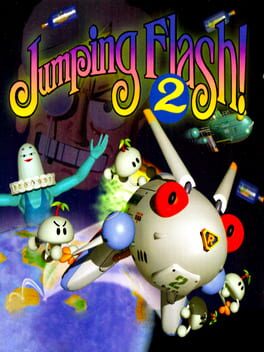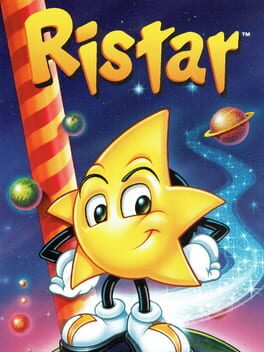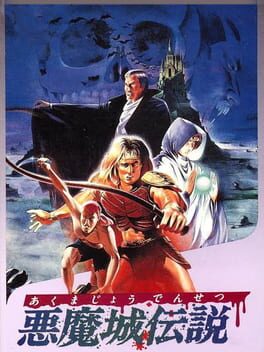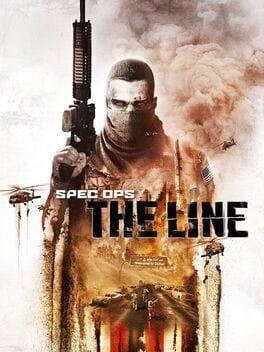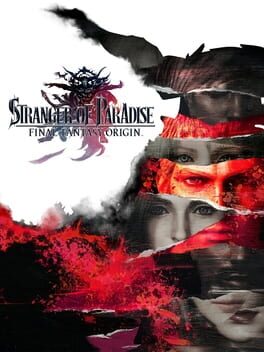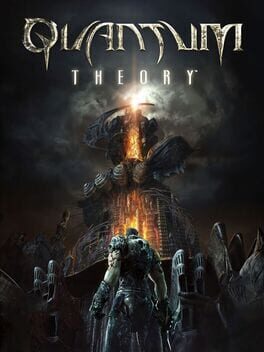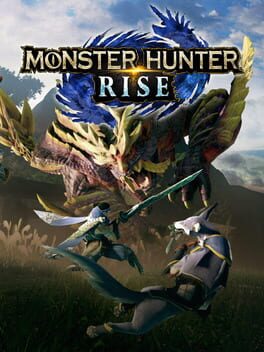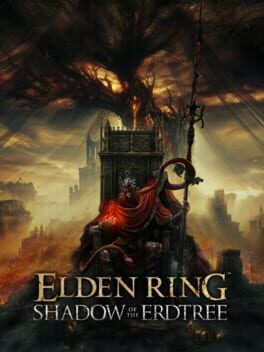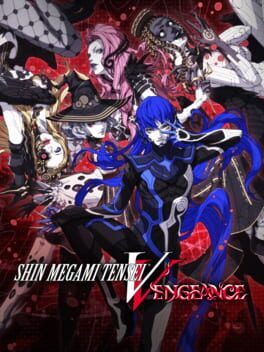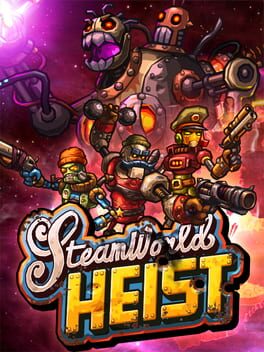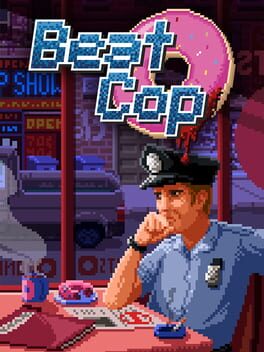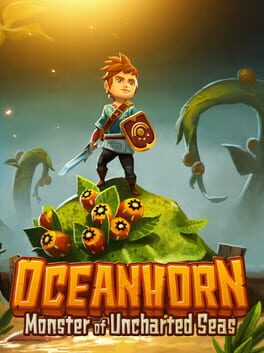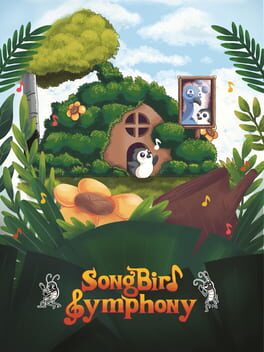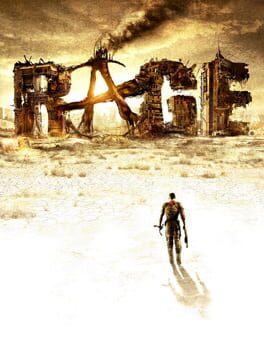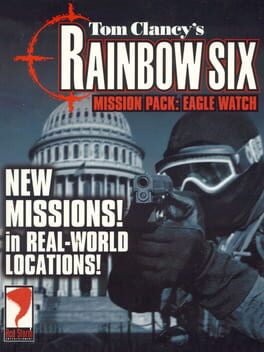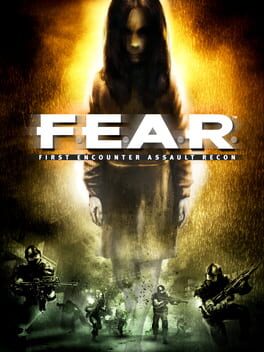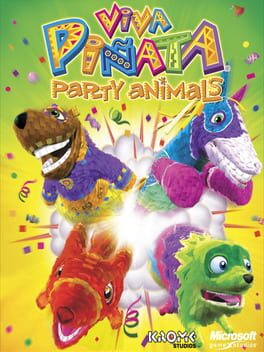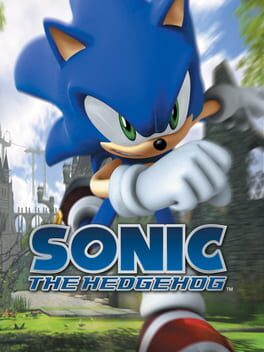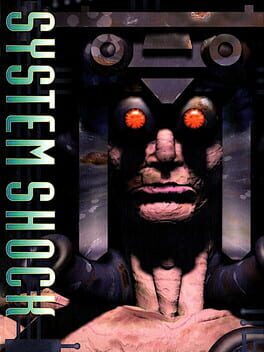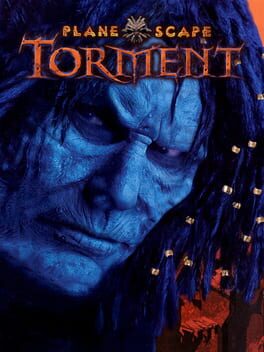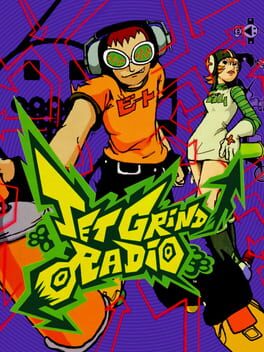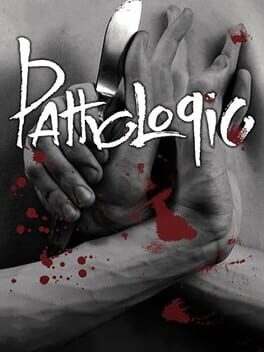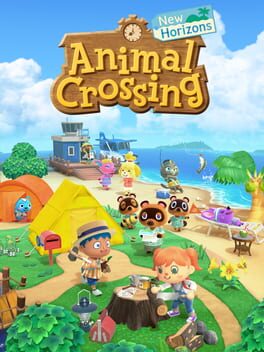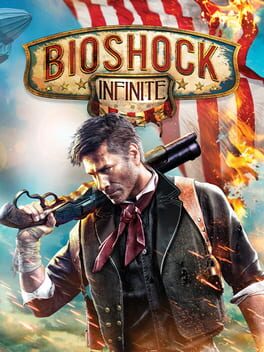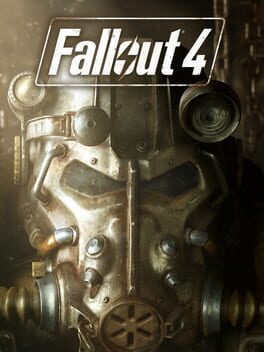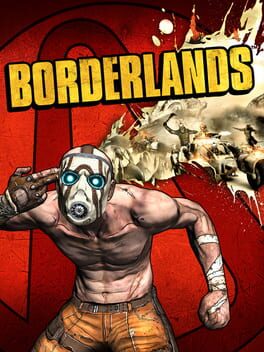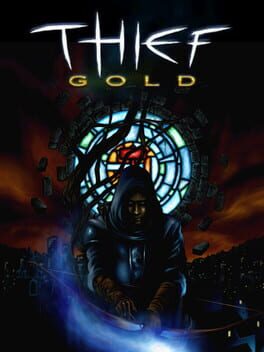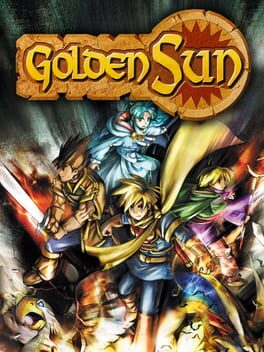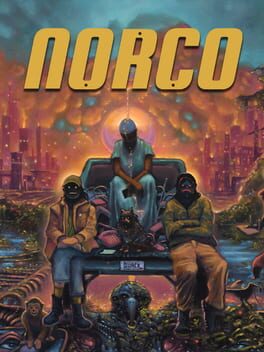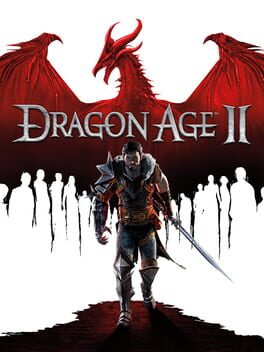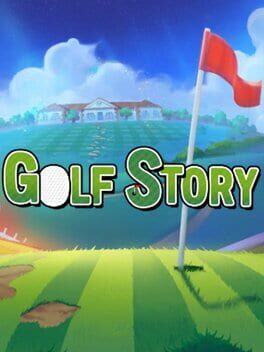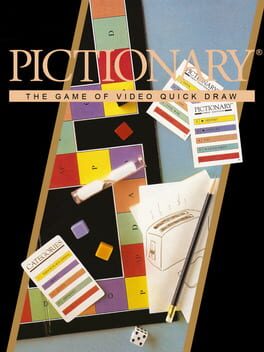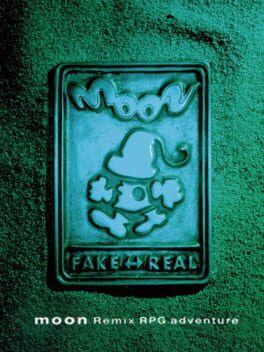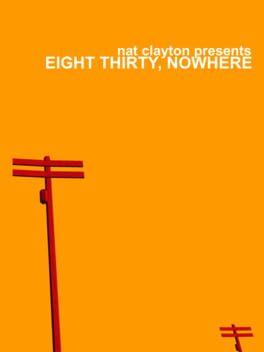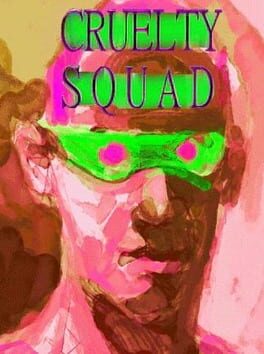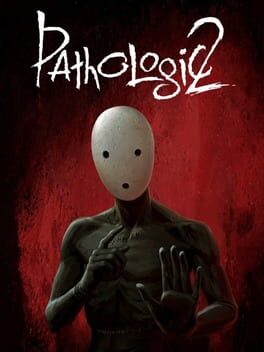DeltaWDunn
1016 reviews liked by DeltaWDunn
Resident Evil 4
2023
I opened up trending and gave a half star to one of the first games I saw
You may now laugh
You may now laugh
Devil May Cry 5
2019
THE DEVIL MAY CRY FRANCHISE IS A PSY-OP INTENDED TO DESTROY YAOI
BY MAKING TWO CHARACTERS NAMED DANTE AND VERGIL AND HAVING THEM BE BROTHERS, THEY HAVE OBFUSCATED THE FACT THAT THE DIVINE COMEDY VERSIONS OF DANTE AND VIRGIL (WHO AREN’T BROTHERS) HAVE THE POTENTIAL FOR THE GREATEST YAOI TO EVER EXIST
EVERY COPY OF THIS GAME BOUGHT IS LIKE TWENTY YAOI LIBRARY OF ALEXANDRIAS BEING BURNED
THE DEVIL MAY CRY FRANCHISE AND EVERY SPARDACEST SHIPPER MUST BE DESTROYED
BY MAKING TWO CHARACTERS NAMED DANTE AND VERGIL AND HAVING THEM BE BROTHERS, THEY HAVE OBFUSCATED THE FACT THAT THE DIVINE COMEDY VERSIONS OF DANTE AND VIRGIL (WHO AREN’T BROTHERS) HAVE THE POTENTIAL FOR THE GREATEST YAOI TO EVER EXIST
EVERY COPY OF THIS GAME BOUGHT IS LIKE TWENTY YAOI LIBRARY OF ALEXANDRIAS BEING BURNED
THE DEVIL MAY CRY FRANCHISE AND EVERY SPARDACEST SHIPPER MUST BE DESTROYED
Pepper Grinder
2024
Ah. That’s more like it.
As the one person I know who likes Donkey Kong Country, Drill Dozer, and that one burrowing escape sequence from Ori and the Will of the Wisps, I knew Pepper Grinder was going to be right up my alley. What impressed me though, was just how precisely the game melded its influences into something that felt simultaneously fresh yet familiar. The level design is classic obstacle escalation (introduce a concept, scale it up, throw in a twist, and then run the player through a final exam into their victory lap) with DKC inspired secrets with skull coin collectibles for unlocking secret levels. Many of the usual formula beats are present as well to force execution tests, from the usual moving parts in the forms of cannons, rope swings, and grappling points, to constantly present sources of danger like the freezing ocean or the temporary dirt patches created from cooling lava. What sets Pepper Grinder apart however, is that the terrain itself is the main obstacle. It feels like such a natural pairing to seamlessly mesh environmental navigation with the course’s very foundation, and the best moments of the game lean into funneling the player through various layers of shifting and isolated terrain while tearing through all that may stand in their way.
That said, I think to really understand the nuances of Pepper Grinder, one has to readily commit to its time attack mode. I could have been sold on the game-feel alone as an amalgam of Donkey Kong Country’s momentum physics and Drill Dozer’s force feedback, but playing under circumstances that force you to squeeze every possible second out of the timer gives the player a better appreciation of its movement mechanics. Pepper is not very fast on foot, nor can she naturally jump very far. Therefore, you’d think that most speed comes from tunneling through terrain, but it’s not quite that either. Rather, the player has to maintain momentum through the interplay of drilling and jumping by exiting terrain via the drill run (boosting right as you’re about to leave a patch of dirt), which commits the player to the projected arc leaving the terrain but with the reward of significantly more speed. The result is some of the weightiest and most satisfying movement I have ever experienced in any platformer. I was constantly figuring out new ways to save seconds by timing by boosts both within terrain and right before exiting terrain (since you can’t just spam boost and using it too early can lock you out from getting the necessary boost jump out of terrain), skipping certain obstacles entirely with well-placed drill runs, and figuring out how to manage my health to bypass unfavorable cycles and damage boost past mines and thorns. Some of those gold time attack medals were tight ordeals, but I absolutely savored every moment of the grind.
Bosses as a whole are a significant improvement from the usual quality of those in Donkey Kong Country. You’re not safe just waiting above ground, and burrowing to dodge attacks forces you to at least dash-dance underground since drilling means you can’t stay in one place. As a result, the player is constantly on the move, and you’re incentivized to do so anyways given that most of the bosses require multiple hits to defeat and aren’t the usual “invincible until they’re done attacking” crop from DKC. The biggest complaint I can levy here is that boss hit/hurtboxes can feel imprecise; I’ve heard that many players have had difficulty figuring out how to correctly drill into the beetle boss’s underbelly, and while I had no issues there, I did die a few times from the skeleton king’s heel hitbox where there was no visible attack in its vicinity. Still, I much prefer these boss fights over many of its peers, and figuring out when and how to best aim drill runs from the ground to speedrun bosses was just as much of a pleasure as speedrunning the courses themselves.
There are a few questionable design choices that could be touched upon here. Firstly, there’s a shop system present where you can purchase optional stickers from a gacha machine as well as temporary health boosts. The former is mostly forgivable given that they don’t impact the gameplay otherwise and can be cleared in about three minutes of purchasing and opening capsules. That said, I feel as if the latter could be removed entirely given that I never felt pressured to purchase insurance for courses and bosses, especially because I was often taking hits anyways to skip past obstacles and because you’re not going to regain the extra health capacity in-level once it’s gone. Secondly, bosses in time-attack mode force you to watch their opening unskippable cutscenes before getting to the action, and this gets extremely irritating when you’re constantly restarting fights to get better times. Finally, Pepper Grinder has a few gimmick areas in the forms of a couple of robot platforming segments, two snowmobile sections where you just hold forward on the control stick, and a couple of run-and-gun levels with little drilling involved. I can look past most of these given that they don’t take up much time and that I enjoyed all the minecart levels from DKC as is, though I do wish that they spaced the gimmicks apart a bit more given that levels 4-3 and 4-4 both have significant run and gun segments sending each course off.
If I did have any lasting complaints, it would be that I just want more of this game. Most players will finish adventure mode in under four hours. That said, even despite a lack of polish here and there, I absolutely adore Pepper Grinder. At this time of writing, I’ve 100%ed the game and even gone back to a few time trials after snagging all the gold medals just to further polish my records. It’s often difficult for me to pin down what makes a game feel good to play, but in this case, I just know. Pepper Grinder feels like an adrenaline rush made just for me, and though its execution barriers and short length will likely make this a tough sell for many, it is undoubtably some of the most fun I have had with a game this year. If you’re curious or enjoy anything that I’ve discussed in this write-up, please give the demo a shot. They don’t make 2D platformers like this anymore, and Pepper Grinder’s existence leaves me wondering why when they absolutely killed it on their first try.
As the one person I know who likes Donkey Kong Country, Drill Dozer, and that one burrowing escape sequence from Ori and the Will of the Wisps, I knew Pepper Grinder was going to be right up my alley. What impressed me though, was just how precisely the game melded its influences into something that felt simultaneously fresh yet familiar. The level design is classic obstacle escalation (introduce a concept, scale it up, throw in a twist, and then run the player through a final exam into their victory lap) with DKC inspired secrets with skull coin collectibles for unlocking secret levels. Many of the usual formula beats are present as well to force execution tests, from the usual moving parts in the forms of cannons, rope swings, and grappling points, to constantly present sources of danger like the freezing ocean or the temporary dirt patches created from cooling lava. What sets Pepper Grinder apart however, is that the terrain itself is the main obstacle. It feels like such a natural pairing to seamlessly mesh environmental navigation with the course’s very foundation, and the best moments of the game lean into funneling the player through various layers of shifting and isolated terrain while tearing through all that may stand in their way.
That said, I think to really understand the nuances of Pepper Grinder, one has to readily commit to its time attack mode. I could have been sold on the game-feel alone as an amalgam of Donkey Kong Country’s momentum physics and Drill Dozer’s force feedback, but playing under circumstances that force you to squeeze every possible second out of the timer gives the player a better appreciation of its movement mechanics. Pepper is not very fast on foot, nor can she naturally jump very far. Therefore, you’d think that most speed comes from tunneling through terrain, but it’s not quite that either. Rather, the player has to maintain momentum through the interplay of drilling and jumping by exiting terrain via the drill run (boosting right as you’re about to leave a patch of dirt), which commits the player to the projected arc leaving the terrain but with the reward of significantly more speed. The result is some of the weightiest and most satisfying movement I have ever experienced in any platformer. I was constantly figuring out new ways to save seconds by timing by boosts both within terrain and right before exiting terrain (since you can’t just spam boost and using it too early can lock you out from getting the necessary boost jump out of terrain), skipping certain obstacles entirely with well-placed drill runs, and figuring out how to manage my health to bypass unfavorable cycles and damage boost past mines and thorns. Some of those gold time attack medals were tight ordeals, but I absolutely savored every moment of the grind.
Bosses as a whole are a significant improvement from the usual quality of those in Donkey Kong Country. You’re not safe just waiting above ground, and burrowing to dodge attacks forces you to at least dash-dance underground since drilling means you can’t stay in one place. As a result, the player is constantly on the move, and you’re incentivized to do so anyways given that most of the bosses require multiple hits to defeat and aren’t the usual “invincible until they’re done attacking” crop from DKC. The biggest complaint I can levy here is that boss hit/hurtboxes can feel imprecise; I’ve heard that many players have had difficulty figuring out how to correctly drill into the beetle boss’s underbelly, and while I had no issues there, I did die a few times from the skeleton king’s heel hitbox where there was no visible attack in its vicinity. Still, I much prefer these boss fights over many of its peers, and figuring out when and how to best aim drill runs from the ground to speedrun bosses was just as much of a pleasure as speedrunning the courses themselves.
There are a few questionable design choices that could be touched upon here. Firstly, there’s a shop system present where you can purchase optional stickers from a gacha machine as well as temporary health boosts. The former is mostly forgivable given that they don’t impact the gameplay otherwise and can be cleared in about three minutes of purchasing and opening capsules. That said, I feel as if the latter could be removed entirely given that I never felt pressured to purchase insurance for courses and bosses, especially because I was often taking hits anyways to skip past obstacles and because you’re not going to regain the extra health capacity in-level once it’s gone. Secondly, bosses in time-attack mode force you to watch their opening unskippable cutscenes before getting to the action, and this gets extremely irritating when you’re constantly restarting fights to get better times. Finally, Pepper Grinder has a few gimmick areas in the forms of a couple of robot platforming segments, two snowmobile sections where you just hold forward on the control stick, and a couple of run-and-gun levels with little drilling involved. I can look past most of these given that they don’t take up much time and that I enjoyed all the minecart levels from DKC as is, though I do wish that they spaced the gimmicks apart a bit more given that levels 4-3 and 4-4 both have significant run and gun segments sending each course off.
If I did have any lasting complaints, it would be that I just want more of this game. Most players will finish adventure mode in under four hours. That said, even despite a lack of polish here and there, I absolutely adore Pepper Grinder. At this time of writing, I’ve 100%ed the game and even gone back to a few time trials after snagging all the gold medals just to further polish my records. It’s often difficult for me to pin down what makes a game feel good to play, but in this case, I just know. Pepper Grinder feels like an adrenaline rush made just for me, and though its execution barriers and short length will likely make this a tough sell for many, it is undoubtably some of the most fun I have had with a game this year. If you’re curious or enjoy anything that I’ve discussed in this write-up, please give the demo a shot. They don’t make 2D platformers like this anymore, and Pepper Grinder’s existence leaves me wondering why when they absolutely killed it on their first try.
Reservoir Dogs
2006
Cannot support a game that glamorizes not tipping
Jumping Flash! 2
1996
(A sequel to Jumping Flash! , which I reviewed here)
I don't know what to be more surprised by: that a 3D game released inearly 1995 1996 had such good camera work, or that said camera work didn't go on to define the genre and spawn numerous copycats! Having a traditional FPS-style camera view that then flips downwards to aim at the ground whenever you double or triple jump is absolute genius; it allows for fair precision platforming elements in an early 3D game, and is also a really smooth way of giving the player their bearings in a large 3D space.
I guess what works againstJumping Flash! Jumping Flash 2 is that it feels very much like a proof-of-concept rather than a fully fleshed out game. The camerawork is brilliant, but the poor draw distance and less-than-helpful radar system turn the collectathon levels into a bit of a chore. Very often I would find myself wandering aimlessly around looking for the final jetpack muu to progress to the exit; and while it would eventually reveal itself on my minimap once the timer got too low, the time spent in the interim didn't feel that interesting thanks to the level design.
I feel likeJumping Flash!'s Jumping Flash 2's levels suffer, on a very micro scale, from what people complain about in open-world games nowadays. As sprawling and open-ended as they are, they would obviously lack the kind of carefully-curated thrills that a more linear experience would bring, but there's not enough going on in them to make up for it. In other words, the stages feel large but otherwise empty; not helped by a majority of enemies that simply frolic around and fart in your general direction.
Mind you, I find it impossible to dislikeJumping Flash Jumping Flash 2 - it's a cute, pleasant, comfortable experience with a game engine that perhaps would be better suited to a game with more high-voltage pacing. If anyone knows of other games with a similar engine to this, let me know! But its lack of many new things to say (the final boss is pretty much a reskin of the previous game's final boss!) and the fact that it doubles down on the same weaknesses present in the first game means that it wastes most of its sizable potential.
I don't know what to be more surprised by: that a 3D game released in
I guess what works against
I feel like
Mind you, I find it impossible to dislike
Celeste
2018
A really good platformer with incredible music and art. And then every once in a while you have to read someone's self-insert tumblr therapy sessions.
Years before "Mario has a panic attack" became a real thing, and was (rightfully) widely derided, this game did it with full-throated sincerity. Not since Braid has there been such an amateurish and, honestly, vicariously embarrassing gulf between gameplay and story.
Years before "Mario has a panic attack" became a real thing, and was (rightfully) widely derided, this game did it with full-throated sincerity. Not since Braid has there been such an amateurish and, honestly, vicariously embarrassing gulf between gameplay and story.
Ristar
1995
Interesting. Frequently, feels more like a puzzle game than an actual platformer: no run button, no momentum, no tough jumps. Instead, getting through every level revolves around picking up on a series of little stage-specific tricks. Take the bosses for example- Ristar's extremely slow movement means 90% of the challenge is figuring out how to avoid their attacks, and the remaining 10% is execution, which seems to be the exact inverse ratio from pretty much every other platformer ever. The focus on learning rather than motor skill makes it nearly impossible to fail a section that you've already beaten, which, combined with the game's short length overall, means that redoing levels after a game over is an absolute breeze, even if you lose your last life on the final boss. The tradeoff here is that, aside from each stage's bonus area, it doesn't feel like there's much to strive for on repeat runs. There is a scoring system, but, from what I gather, it mostly consists of bonking your head on walls at random and hoping they drop gems, which doesn't much interest me personally. I vastly prefer the Sonic or Mario approach where you can feel yourself completing each portion of the game faster or more adeptly each time. But it's hard to argue against its design philosophy- having to pay close attention to the details of your surroundings rather than running past them as speedily as possible- as a vehicle for embracing the Genesis's bouncy, stylish presentation; six-and-a-half bite-sized worlds and every single one is memorable. Even if not my cup of tea personally, it's pretty easy to see why this one is among the more fondly remembered games on the system.
Akumajou Densetsu
1989
Some would say that all this ''vanishing you'' thing is getting tiring, Dracula, but I must say... I like to think I’m just getting the hang of it.
I didn't know what the hell to expect from Castlevania III. As a stranger to the monster-whipping saga till now, it's by far the game I've heard the least about regarding the original Famicon/NES trilogy, tho that may have been a given since the debate around Simon's Quest and praise for the original Castlevania have been pretty loud on online discourse, especially some years back.
But when I saw that III was going to completely backpaddle on everything II did, I would lie if I said I didn’t feel disappointed; I may not think highly of Simon’s Quest’s as a complete package, but that game did some incredibly genius stuff with its tone and design, and even if I don’t have anything against continuist entries in a franchise, returning to the closed walls of Dracula’s castle once again and play the same dance around from the first time felt like throwing out an insurmountable potential, to throw out the window a more aggressive a wild look into Transylvania for the sake of the jumping and falling that worked on the first go.
So yeah, you could say I was pretty cautious going in, I never expected to hate it or even dislike it, in fact the little I heard was pretty positive, but I was still scared that I’d end up not getti- Oh who am I kidding, you know where I’m going with this and it’s exact same rant I said for Hi Fi Rush, let’s cut the shit, time to gush!
Also, as you may have noticed but I failed to acknowledge till now, I ended up playing the original Japanese version of the game, since I was told that the NES version went absolutely batshit insane with its difficulty, even more than the usual I mean, so this is not Castlevania gaming, this is Akumajou Densetsu gaming and, I’m sorry, but that name actually goes pretty hard and is what I’m gonna call it from now till the end of times.
Now, where was I?... Oh yeah, I was about to START JAMMING!
I… is it too exaggerated to say that Akumajou Densetsu is one of my favorite, if not my absolute preferred, Famicon game? I cannot thing of other 8 Bit adventures with a similar structure that compare, it is so impressive both a sequel and even a stand-alone game that I’m still SHOCKED at the technical and design prowess it shows, and not because I didn’t think the team behind these games wasn’t capable of something like this, but because it goes further beyond what the series stablished, a series already accustomed with perfectioning and exploring new visual and gameplay ideas.
We may have returned to the 2D linear platforming roots, but that just means we have another way to explore Transylvania; Simon’s Quest managed to create a fairly grounded, sad world, full of villages and cycles, secrets and dungeons, that Transylvania had seen and suffered the effects of the first game and it showed and perfectly worked for what it was. But now we go back 100 years to the past, to the rise of the Belmont name and the adventure of Trevor, and this Transylvania is very different from last time, but so hauntingly familiar at the same time. We return to the vibrant, outstandingly looking visuals from the first adventure, scenarios beautiful as a painting and designed to each fit a different part that conforms this damned land, from overtaken resting grounds to ever rising mechanical towers. Long are the days of being confined to a singular building, or rather, it’ll be long before that fate catches up to Simon, and right now openness is the name of the game. Paths that branch with each level beaten feel exciting, like a constant plunge into the unknown that rewards you with new faces or progress; this goes beyond just being replayability candy, this is an honest to god odyssey that gives you the lead, and can go one way or another depending which way you decide to go.
It wouldn’t be a Castlevania game without some bullshit which, charming as it may be, it’s still bullshit, and Akumajou Densetsu, even in its not as completely deranged original version, it still provides some challenge that walks dangerously close into the ‘’unfair barrage of crap’’ zone, but for every moment like that that it has, it doesn’t take too long for me to be swept away by the artful platforming. This may just be my favorite collection of hazards and challenges I’ve seen a platforming sequel in my entire life, things like the giant spinning gears, the acid tears that melt blocks or the no-jump platforms are, too put it lightly, unbelievable amazing. More than ever before, every platform, every enemy, every giant swinging pendulum, it has a tangible real place in this world, it fits, and it’s so much fun to jump across and whip through. I still cannot believe the scrolling sections, which tend to be parts I do not enjoy in any game, were something I loved to see and beat each and every time, and the rewarding feeling I got from beating them was the same as beating Dracula in the first game, which is getting me in a boss fighting mood…
I never really cared for most of the bosses of the series so far, the original Castlevania had a pretty great roster with some foes that made the overall quality sour, and you could argue Simon’s Quest doesn’t even have bosses, just really big, really slow big targets that damaged you more by contact than through their actual attacks… And now I’m struggling to think about one boss I disliked even a bit! All new big bads are aggressive as hell, and that makes the challenge come to one thing; either be patient a find a spot that helps you to take your chances, or never. Stop. MOVING. They are all some memorable I could praise them all in different ways, like how much I love Frankenstein and its slow movement but hardhitting throwing blocks, the gauntlet of already seen faces and an amazing callback to the final boss of the original game that the Fire Spirit poses, the sheer terror Death produces with a rerise of its original fight a brand new phase, Fake Dracula being a super cool callback and a fun fight of its own that’s amplified by the platforms… I could go on and on, hell, even fights like the albeit simple Monster Grant stuck out in my mind as really exciting encounters! …oh wait, that reminds me… hi Grant!
Trevor is not alone is its voyage, even if I wouldn’t have bat an eye if he was; he controls exactly the same as Simon (or at least so similarly I didn’t noticed any differences) which might as well mean that he controls smooth as butter, he walks with the same calculated heaviness and jumps with requiting the same commitment as ever, he even still has the same tools as seen in the first game, which I kind of like, I’m probably thinking about it too much but I like how these items go so back in the timeline and how they still fit so well to the design. And still… there’s space for surprises. New faces show up as playable companions, always available to change into once you meat them, even if you can only have one at a time: they fit perfectly into the world, saving each in a different way and meeting them in completely different places, which is yet another way the game shows just how much freedom it lends you and the routes you can take, and no matter if you only come across to one in your entire playthrough, it always feels like you gain something. Grant is a fun slippery bastard, being able to cling into walls and roofs, he can go through places boring Trevor never could and go past enemies with so much ease it sometimes feels like another puzzle in itself; Sypha has a lot of potions available to obtain, and there’s a reason many players beat the game when being accompanied by her, the potions and special abilities make her eat through entire hordes of enemies and even bosses with the right the chance… but I’m sorry, my favorite has to be Alucard. As I said, all helpers are useful on their own ways and all are super fun, but there’s something so satisfying about going ‘’you know what, fuck this room in particular!’’, turning into a bat and skipping the entire challenge, and also his fully upgraded attack is like, the absolute best, my favorite just behind Trevor’s own whip.
Akumajou Densetsu is so far above being just a sequel that even when I was nearing the ending I was expecting it to surprise me yet again. The continuous levels and special challenges that go far above the usual 3 sections of the past, having to go back in a few stages which SHOULD feel tiring and boring, but instead is just another way the way poses a challenge in a different way, with even some surprises along the way. New enemies, new phases that make the original Dracula fight look archaic, with is easily the best evolution regarding boss fights the game could have ever hoped for, the path system, the different characters and item holding…
If Castlevania made me feel determination and Simon’s Quest a profound feeling of curiosity and sadness, Akumajou Densetsu combines all those emotions and adds pure excitement into the mix, excitement for the unknown, yes, but also to see this adventure of the past come true, to see things that shouldn’t surprise me completely awe me, the opening cinematic, as if a movie was beginning and the beautiful music enveloped my ears, perfectly encapsulates everything this series strived for and then some, being an epic as much as a sad tale, but once I reached Dracula’s castle, the emotions I should have felt like terror and caution weren’t there, instead, only a thought crossed my mind as I smiled…: ‘’I’m home’’
I didn't know what the hell to expect from Castlevania III. As a stranger to the monster-whipping saga till now, it's by far the game I've heard the least about regarding the original Famicon/NES trilogy, tho that may have been a given since the debate around Simon's Quest and praise for the original Castlevania have been pretty loud on online discourse, especially some years back.
But when I saw that III was going to completely backpaddle on everything II did, I would lie if I said I didn’t feel disappointed; I may not think highly of Simon’s Quest’s as a complete package, but that game did some incredibly genius stuff with its tone and design, and even if I don’t have anything against continuist entries in a franchise, returning to the closed walls of Dracula’s castle once again and play the same dance around from the first time felt like throwing out an insurmountable potential, to throw out the window a more aggressive a wild look into Transylvania for the sake of the jumping and falling that worked on the first go.
So yeah, you could say I was pretty cautious going in, I never expected to hate it or even dislike it, in fact the little I heard was pretty positive, but I was still scared that I’d end up not getti- Oh who am I kidding, you know where I’m going with this and it’s exact same rant I said for Hi Fi Rush, let’s cut the shit, time to gush!
Also, as you may have noticed but I failed to acknowledge till now, I ended up playing the original Japanese version of the game, since I was told that the NES version went absolutely batshit insane with its difficulty, even more than the usual I mean, so this is not Castlevania gaming, this is Akumajou Densetsu gaming and, I’m sorry, but that name actually goes pretty hard and is what I’m gonna call it from now till the end of times.
Now, where was I?... Oh yeah, I was about to START JAMMING!
I… is it too exaggerated to say that Akumajou Densetsu is one of my favorite, if not my absolute preferred, Famicon game? I cannot thing of other 8 Bit adventures with a similar structure that compare, it is so impressive both a sequel and even a stand-alone game that I’m still SHOCKED at the technical and design prowess it shows, and not because I didn’t think the team behind these games wasn’t capable of something like this, but because it goes further beyond what the series stablished, a series already accustomed with perfectioning and exploring new visual and gameplay ideas.
We may have returned to the 2D linear platforming roots, but that just means we have another way to explore Transylvania; Simon’s Quest managed to create a fairly grounded, sad world, full of villages and cycles, secrets and dungeons, that Transylvania had seen and suffered the effects of the first game and it showed and perfectly worked for what it was. But now we go back 100 years to the past, to the rise of the Belmont name and the adventure of Trevor, and this Transylvania is very different from last time, but so hauntingly familiar at the same time. We return to the vibrant, outstandingly looking visuals from the first adventure, scenarios beautiful as a painting and designed to each fit a different part that conforms this damned land, from overtaken resting grounds to ever rising mechanical towers. Long are the days of being confined to a singular building, or rather, it’ll be long before that fate catches up to Simon, and right now openness is the name of the game. Paths that branch with each level beaten feel exciting, like a constant plunge into the unknown that rewards you with new faces or progress; this goes beyond just being replayability candy, this is an honest to god odyssey that gives you the lead, and can go one way or another depending which way you decide to go.
It wouldn’t be a Castlevania game without some bullshit which, charming as it may be, it’s still bullshit, and Akumajou Densetsu, even in its not as completely deranged original version, it still provides some challenge that walks dangerously close into the ‘’unfair barrage of crap’’ zone, but for every moment like that that it has, it doesn’t take too long for me to be swept away by the artful platforming. This may just be my favorite collection of hazards and challenges I’ve seen a platforming sequel in my entire life, things like the giant spinning gears, the acid tears that melt blocks or the no-jump platforms are, too put it lightly, unbelievable amazing. More than ever before, every platform, every enemy, every giant swinging pendulum, it has a tangible real place in this world, it fits, and it’s so much fun to jump across and whip through. I still cannot believe the scrolling sections, which tend to be parts I do not enjoy in any game, were something I loved to see and beat each and every time, and the rewarding feeling I got from beating them was the same as beating Dracula in the first game, which is getting me in a boss fighting mood…
I never really cared for most of the bosses of the series so far, the original Castlevania had a pretty great roster with some foes that made the overall quality sour, and you could argue Simon’s Quest doesn’t even have bosses, just really big, really slow big targets that damaged you more by contact than through their actual attacks… And now I’m struggling to think about one boss I disliked even a bit! All new big bads are aggressive as hell, and that makes the challenge come to one thing; either be patient a find a spot that helps you to take your chances, or never. Stop. MOVING. They are all some memorable I could praise them all in different ways, like how much I love Frankenstein and its slow movement but hardhitting throwing blocks, the gauntlet of already seen faces and an amazing callback to the final boss of the original game that the Fire Spirit poses, the sheer terror Death produces with a rerise of its original fight a brand new phase, Fake Dracula being a super cool callback and a fun fight of its own that’s amplified by the platforms… I could go on and on, hell, even fights like the albeit simple Monster Grant stuck out in my mind as really exciting encounters! …oh wait, that reminds me… hi Grant!
Trevor is not alone is its voyage, even if I wouldn’t have bat an eye if he was; he controls exactly the same as Simon (or at least so similarly I didn’t noticed any differences) which might as well mean that he controls smooth as butter, he walks with the same calculated heaviness and jumps with requiting the same commitment as ever, he even still has the same tools as seen in the first game, which I kind of like, I’m probably thinking about it too much but I like how these items go so back in the timeline and how they still fit so well to the design. And still… there’s space for surprises. New faces show up as playable companions, always available to change into once you meat them, even if you can only have one at a time: they fit perfectly into the world, saving each in a different way and meeting them in completely different places, which is yet another way the game shows just how much freedom it lends you and the routes you can take, and no matter if you only come across to one in your entire playthrough, it always feels like you gain something. Grant is a fun slippery bastard, being able to cling into walls and roofs, he can go through places boring Trevor never could and go past enemies with so much ease it sometimes feels like another puzzle in itself; Sypha has a lot of potions available to obtain, and there’s a reason many players beat the game when being accompanied by her, the potions and special abilities make her eat through entire hordes of enemies and even bosses with the right the chance… but I’m sorry, my favorite has to be Alucard. As I said, all helpers are useful on their own ways and all are super fun, but there’s something so satisfying about going ‘’you know what, fuck this room in particular!’’, turning into a bat and skipping the entire challenge, and also his fully upgraded attack is like, the absolute best, my favorite just behind Trevor’s own whip.
Akumajou Densetsu is so far above being just a sequel that even when I was nearing the ending I was expecting it to surprise me yet again. The continuous levels and special challenges that go far above the usual 3 sections of the past, having to go back in a few stages which SHOULD feel tiring and boring, but instead is just another way the way poses a challenge in a different way, with even some surprises along the way. New enemies, new phases that make the original Dracula fight look archaic, with is easily the best evolution regarding boss fights the game could have ever hoped for, the path system, the different characters and item holding…
If Castlevania made me feel determination and Simon’s Quest a profound feeling of curiosity and sadness, Akumajou Densetsu combines all those emotions and adds pure excitement into the mix, excitement for the unknown, yes, but also to see this adventure of the past come true, to see things that shouldn’t surprise me completely awe me, the opening cinematic, as if a movie was beginning and the beautiful music enveloped my ears, perfectly encapsulates everything this series strived for and then some, being an epic as much as a sad tale, but once I reached Dracula’s castle, the emotions I should have felt like terror and caution weren’t there, instead, only a thought crossed my mind as I smiled…: ‘’I’m home’’
Spec Ops: The Line
2012
"The US military does not condone the killing of unarmed combatants. But this isn't real, so why should you care?"
I began collecting physical copies of Xbox 360 games almost a year ago, anticipating seventh generation releases might suffer from the same degree of inflation that's plagued earlier console libraries in the aftermarket. This was perhaps a foolish concern as many seventh gen games are still widely available on digital storefronts, but occasionally there's an exception, a game that gets delisted and which sees a hike in value that makes it highly sought after and prohibitively expensive. I picked up Spec Ops: The Line last March, and I'd say the near five times increase in its market value is a damn good ROI. That's why they call me Mr. Money.
Being delisted and thus becoming more relevant also served as a great motivator to finally take the game off my Xbox shelf andfight the good fight, oorah! shoot a bunch of unarmed civilians. My curiosity for it had been mounting for some time anyway, in no small part to the march of retroactive playthroughs and ensuing Hot Takes that have ended up in front of me with increasing frequency. Some of the more disparaging opinions I've seen cast Spec Ops as boorish, weakly imitating the broad strokes of its inspirations, most notably Heart of Darkness. Hell, the main antagonist, John Konrad, shares a name suspiciously similar to author Joseph Conrad -- it doesn't get more on-the-nose than that.
Indeed, when you compare Spec Ops: The Line to the quality of meta-narrative games releasing today, it seems downright quaint, maybe even oafish in how it makes its case against the institution of war and the distressing consequences of "justifiable violence." With a setup that amounts to "respected military leader has gone off the grid and established a cult" that uses borrowed imagery from Jacob's Ladder, and story beats that are undercut by the repeated pop of achievemnts, I can get where people are coming from.
However, Spec Ops is very much a game of its era, and it's easy to take for granted what it's doing when you aren't being mindful of the climate of gaming circa the late-aughts and early 2010s. This released during the height of Call of Duty's popularity, in a time when military shooters played more like propaganda for America's actions in the Middle East. These games frequently cast the player as the hero, whose actions were unassailable or at least justifiable enough that the player was never made to see or consider the consequences of what they'd done. America's Army was allowed to hit the mass market roughly around this time, for chrissake.
Spec Ops is a military shooter about military shooters, and directly addresses the way gaming culture insulated players to the violence of war by glamorizing it. It accomplishes this in ways both subtle and heavy-handed, typically within the same set piece, like the infamous white phosphorus scene which is set up like a typical mortar firing mission that then forces you to slowly walk through the aftermath and survey the horrific results of what you've done. Kid Coolout angrily yelling at Nolan North for having yet another mental break might functionally serve as an awkward statement of intent by the writers, and other games before Spec Ops looked into the camera and stated in no unclear terms that "war bad," but the very specific and pointed way in which Spec Ops attacks its particular brand of shooter makes what it's doing both novel and necessary.
I especially enjoyed some of the ways Spec Ops preys on how players might approach a game of this type during this era, too. The opening sequence has one of your squad members attempting to reason with a group of insurgents by speaking their language, leaving you in the dark as to what is being discussed while another squad member gets in your ear about an interactive piece of the environment. "Hey, that bus is full of sand, if you shoot it you can take them out..." Yeah. Yeah, what's a little war crime in my shooter? This is a video game, I'm doing that all the time. I see a window flashing yellow and a prompt that says "shoot" and I squeeeeze the trigger...
Of course, a lot of these choices - and those that are larger and more narratively driven - are an illusion. "I didn't have a choice," is something Walker repeatedly states to make peace with his actions. It's a video game, you did what was expected of you, so why should you stop and feel bad about it? The more you progress and the more Walker deteriorates physically and mentally, the more you're hit with these excuses. Even the loading screens trade helpful gameplay hints to press you on what you've done or otherwise steep you in Walker's headspace.
"To kill for yourself is murder. To kill for your government is heroic. To kill for entertainment is harmless."
None of this is particularly special when viewed strictly through a modern lens, but as a piece of work so heavily characterized by when it came out, I think it's pretty damn great. Less great, however, is its gameplay, which even by 2012 standards was about as dry as a cover-shooter could possibly get. This is partly the result of being hit with delays, one of which was to force a multiplayer mode into the final product, as was the trend at the time. I didn't bother to mess around in that, but having watched a few videos, it does appear very tacked on and lacks the core game's subversive spirit. If only that time were spent elsewhere, like incorporating more dynamic elements to the sand that's blanketed Dubai as was originally intended... oh well.
I think there's a lot of fair criticisms out there about Spec Ops: The Line, but I also think some of them are perhaps too colored by what is expected of a game today rather than appreciating the atmosphere of the time. There's enough of value here that I think it's worth playing even outside its notoriety as a delisted game, and as my pal Larry Davis pointed out to me in private, it's also crazy that this is where a series of 10$ PlayStation 1 games eventually ended up.
"You are still a good person."
(Sad "oorahs")
I began collecting physical copies of Xbox 360 games almost a year ago, anticipating seventh generation releases might suffer from the same degree of inflation that's plagued earlier console libraries in the aftermarket. This was perhaps a foolish concern as many seventh gen games are still widely available on digital storefronts, but occasionally there's an exception, a game that gets delisted and which sees a hike in value that makes it highly sought after and prohibitively expensive. I picked up Spec Ops: The Line last March, and I'd say the near five times increase in its market value is a damn good ROI. That's why they call me Mr. Money.
Being delisted and thus becoming more relevant also served as a great motivator to finally take the game off my Xbox shelf and
Indeed, when you compare Spec Ops: The Line to the quality of meta-narrative games releasing today, it seems downright quaint, maybe even oafish in how it makes its case against the institution of war and the distressing consequences of "justifiable violence." With a setup that amounts to "respected military leader has gone off the grid and established a cult" that uses borrowed imagery from Jacob's Ladder, and story beats that are undercut by the repeated pop of achievemnts, I can get where people are coming from.
However, Spec Ops is very much a game of its era, and it's easy to take for granted what it's doing when you aren't being mindful of the climate of gaming circa the late-aughts and early 2010s. This released during the height of Call of Duty's popularity, in a time when military shooters played more like propaganda for America's actions in the Middle East. These games frequently cast the player as the hero, whose actions were unassailable or at least justifiable enough that the player was never made to see or consider the consequences of what they'd done. America's Army was allowed to hit the mass market roughly around this time, for chrissake.
Spec Ops is a military shooter about military shooters, and directly addresses the way gaming culture insulated players to the violence of war by glamorizing it. It accomplishes this in ways both subtle and heavy-handed, typically within the same set piece, like the infamous white phosphorus scene which is set up like a typical mortar firing mission that then forces you to slowly walk through the aftermath and survey the horrific results of what you've done. Kid Coolout angrily yelling at Nolan North for having yet another mental break might functionally serve as an awkward statement of intent by the writers, and other games before Spec Ops looked into the camera and stated in no unclear terms that "war bad," but the very specific and pointed way in which Spec Ops attacks its particular brand of shooter makes what it's doing both novel and necessary.
I especially enjoyed some of the ways Spec Ops preys on how players might approach a game of this type during this era, too. The opening sequence has one of your squad members attempting to reason with a group of insurgents by speaking their language, leaving you in the dark as to what is being discussed while another squad member gets in your ear about an interactive piece of the environment. "Hey, that bus is full of sand, if you shoot it you can take them out..." Yeah. Yeah, what's a little war crime in my shooter? This is a video game, I'm doing that all the time. I see a window flashing yellow and a prompt that says "shoot" and I squeeeeze the trigger...
Of course, a lot of these choices - and those that are larger and more narratively driven - are an illusion. "I didn't have a choice," is something Walker repeatedly states to make peace with his actions. It's a video game, you did what was expected of you, so why should you stop and feel bad about it? The more you progress and the more Walker deteriorates physically and mentally, the more you're hit with these excuses. Even the loading screens trade helpful gameplay hints to press you on what you've done or otherwise steep you in Walker's headspace.
"To kill for yourself is murder. To kill for your government is heroic. To kill for entertainment is harmless."
None of this is particularly special when viewed strictly through a modern lens, but as a piece of work so heavily characterized by when it came out, I think it's pretty damn great. Less great, however, is its gameplay, which even by 2012 standards was about as dry as a cover-shooter could possibly get. This is partly the result of being hit with delays, one of which was to force a multiplayer mode into the final product, as was the trend at the time. I didn't bother to mess around in that, but having watched a few videos, it does appear very tacked on and lacks the core game's subversive spirit. If only that time were spent elsewhere, like incorporating more dynamic elements to the sand that's blanketed Dubai as was originally intended... oh well.
I think there's a lot of fair criticisms out there about Spec Ops: The Line, but I also think some of them are perhaps too colored by what is expected of a game today rather than appreciating the atmosphere of the time. There's enough of value here that I think it's worth playing even outside its notoriety as a delisted game, and as my pal Larry Davis pointed out to me in private, it's also crazy that this is where a series of 10$ PlayStation 1 games eventually ended up.
"You are still a good person."
(Sad "oorahs")
Hollow Knight
2017
Hollow Knight thrives off of a combat system that ties pretty seamlessly into the exploration. Just by hitting a wall, you'll find yourself in a new area with several bosses/minibosses and usually they are all pretty solid. That's unfortunately about where my praise ends however, because although I respect its ambition, I feel it suffers from several choices that hinder both the combat and exploration elements that should naturally tie together.
Exploration-focused games usually go for relatively guided level design. Even if the world design itself is non-linear and lets you go anywhere, rooms will maintain a guided format because it allows the designer to add interesting trails to fall down. Going down into a new area off of a winding trail as the visuals slowly change and you have to interact with new mechanics is practically formula at this point for these types of games. Hollow Knight instead applies this philosophy to the entire map at large; where areas are effectively trails to other areas and that serves as their purpose. Ambitious in theory but troubling in execution; you will find that most areas effectively play out like big open boxes with a few mazes of blocks and samey rooms inside. Gimmicks are often relegated to extremely simple changes to the formula that don't compensate for the sheer amount of aimless wandering through repetitive, unfocused level design. If it's not an area you find in a wall, it's a generic item that isn't an actual upgrade and has very little gameplay purpose.
The progression of Hollow Knight is very weak overall to me; whereas Metroid-likes usually like to give you items for every milestone that would lead you being able to go back and open up a new area, Hollow Knight oft abandons the notion of backtracking because so much of it is open from the get-go. Abilities are spread out across hours of play and usually most of the most engaging parts of the game (the bosses) don't give you them and instead are just there to add clutter to the world. Now, in defense of the game, the boss fights are above average for sure. Snappy, fast combat that doesn't over-rely on tired tropes in action-platformers is satisfying to pull off and there's decent variety, but they don't feel meaningful. The fact is you'll probably in the end get more mileage out of random enemies rather than half of the optional bosses in this game since your most effective and active progression you'll be having is collecting Geo; the currency of Hallownest. The best way to collect Geo, is to farm respawning enemies. And there-in lies the issue with Hollow Knight. For a game with such scope and ambition, nothing feeds into another. You get currency to get trivial upgrades while sitting around to get the big cool abilities and fight optional bosses which more often than not give you absolutely nothing. I'm not opposed to a game being fundamentally unrewarding, but I'm opposed to it when all I have are blue mazes to explore. There's another game about blue mazes that released four decades ago, but at least that one has space dinosaurs.
Exploration-focused games usually go for relatively guided level design. Even if the world design itself is non-linear and lets you go anywhere, rooms will maintain a guided format because it allows the designer to add interesting trails to fall down. Going down into a new area off of a winding trail as the visuals slowly change and you have to interact with new mechanics is practically formula at this point for these types of games. Hollow Knight instead applies this philosophy to the entire map at large; where areas are effectively trails to other areas and that serves as their purpose. Ambitious in theory but troubling in execution; you will find that most areas effectively play out like big open boxes with a few mazes of blocks and samey rooms inside. Gimmicks are often relegated to extremely simple changes to the formula that don't compensate for the sheer amount of aimless wandering through repetitive, unfocused level design. If it's not an area you find in a wall, it's a generic item that isn't an actual upgrade and has very little gameplay purpose.
The progression of Hollow Knight is very weak overall to me; whereas Metroid-likes usually like to give you items for every milestone that would lead you being able to go back and open up a new area, Hollow Knight oft abandons the notion of backtracking because so much of it is open from the get-go. Abilities are spread out across hours of play and usually most of the most engaging parts of the game (the bosses) don't give you them and instead are just there to add clutter to the world. Now, in defense of the game, the boss fights are above average for sure. Snappy, fast combat that doesn't over-rely on tired tropes in action-platformers is satisfying to pull off and there's decent variety, but they don't feel meaningful. The fact is you'll probably in the end get more mileage out of random enemies rather than half of the optional bosses in this game since your most effective and active progression you'll be having is collecting Geo; the currency of Hallownest. The best way to collect Geo, is to farm respawning enemies. And there-in lies the issue with Hollow Knight. For a game with such scope and ambition, nothing feeds into another. You get currency to get trivial upgrades while sitting around to get the big cool abilities and fight optional bosses which more often than not give you absolutely nothing. I'm not opposed to a game being fundamentally unrewarding, but I'm opposed to it when all I have are blue mazes to explore. There's another game about blue mazes that released four decades ago, but at least that one has space dinosaurs.

